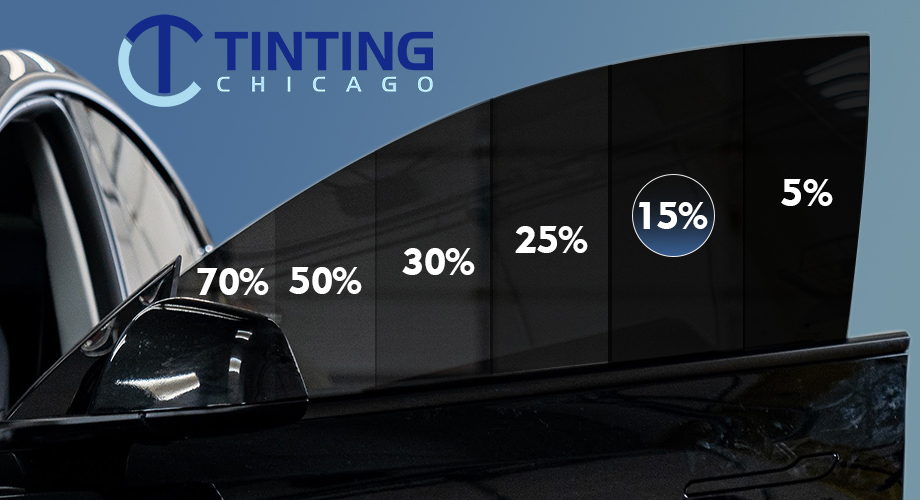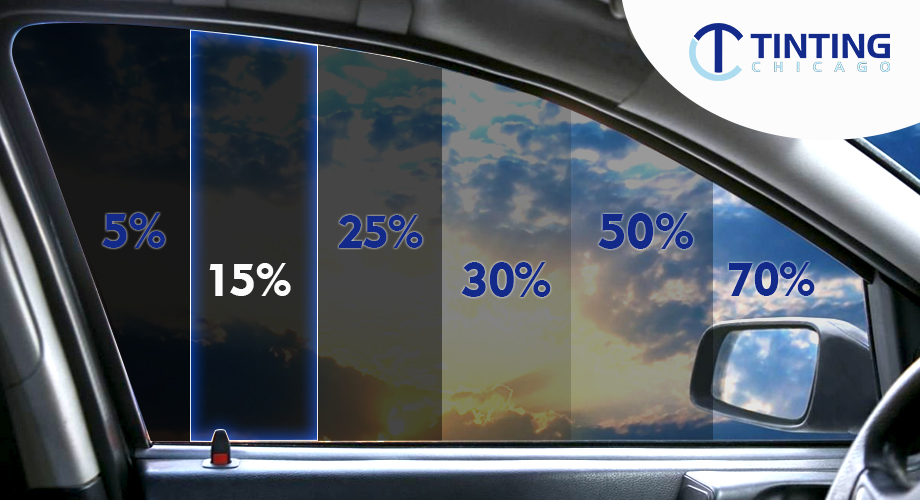


































































































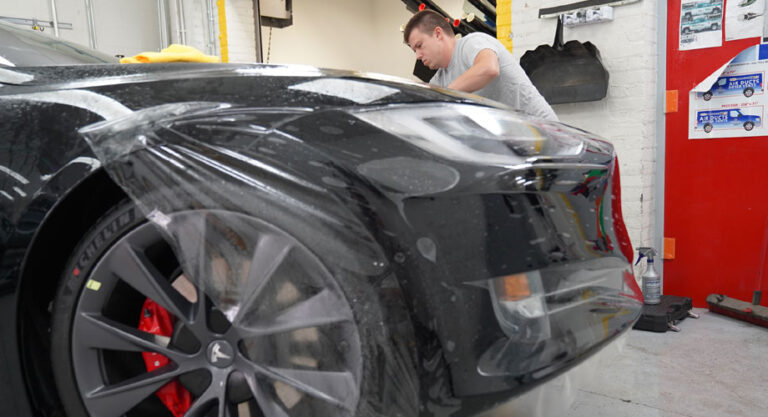
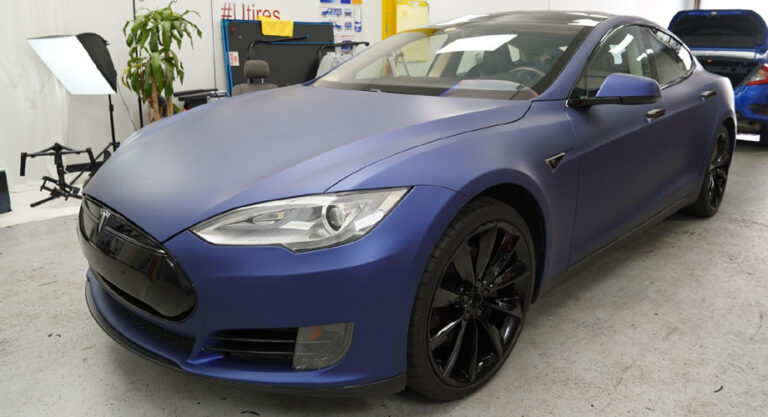

















































































































Tinting is a quick and effective way to improve privacy and demonstrate the character and status of the owner. However, it is important to comply with all legal regulations to make it beautiful and legal.
It is widely used not only in cars but also in buildings. Let’s talk about it in more detail.

Where Is 15% Glass Tinting Used?
For some reason, it is believed that only glass on vehicles can be tinted. But this is not the case. The method is widely used in residential and commercial real estate. Let’s look at the purpose of tinting in different ways.
Cars
It is used for both personal cars and commercial vehicles (trucks, vans) to ensure privacy, protect from sunlight and reduce the temperature in the cabin. In the case of a private car, this is done to enhance the vehicle’s appearance.
Residential buildings
15% is used for tint on house windows and in apartments (on windows and balconies). The aim is to reduce the penetration of sunlight, increase privacy and improve energy efficiency. Window tinting for interior doors is gaining momentum as it adds a common style to the entire home.
Commercial (offices, shops, shopping centers)
15% tint on windows reduces air conditioning costs, improves employee comfort, and protects equipment from burnout and heat.
Public places
In restaurants and cafes, window tinting can improve the atmosphere, reduce light penetration and provide a pleasant environment for visitors.
In hotels, it increases the level of privacy for guests and the comfort of the establishment.
Industry
The tinting helps to reduce indoor temperatures, which reduces cooling costs. Protects equipment and goods from the sun.
Educational institutions
The tinting reduces glare, creates a comfortable learning environment, and reduces energy costs.
Glass tinting with a light transmission of 15% (or 20%) is widely used in various industries. You can provide comfort and protection from ultraviolet rays, and reduce the cost of heating or cooling your premises.
Which Cars are Most Often Tinted by 15%?
In the US, the following vehicles are most commonly seen with this tint:
SUVs and crossovers (SUVs)
Owners of large cars choose darker tints to improve the appearance and prestige of the car (because we know how attractive cars with tints look), as well as to provide more sun protection and privacy.
Pickup (Trucks)
Most often on cars used for commercial purposes or for outdoor activities.
Sports Cars
These cars use this percentage of tint to emphasize an aggressive and stylish look.
Limousines and Luxury Vehicles
They often have darker tinting to ensure maximum passenger comfort and privacy.
Vehicles for security and safety (Security Vehicles)
They require darker tinting to guarantee privacy and reduce visibility from the outside.
As you can see, it’s quite a long list. But what about car brands. Is it possible to make such statistics?
The Most Common Car Brands That Use 15% Tinting
The most commonly used car brands with 15% window tint:
- Toyota: Tacoma (Pickup), Tundra (Pickup), and 4Runner (SUV) models.
- Honda: Sedan and Hatchback models.
- BMW: models of the 3, 5 and X5 series (SUV).
- Mercedes-Benz: C-Class, E-Class and GLE (SUV).
- Ford: F-150 (Pickup), Explorer (SUV), and Mustang (sports car).
- Jeep: Wrangler and Grand Cherokee models.
- Audi: A4, A6 and Q5 (SUV).
- Lexus: Sedan and Coupe models.
- Hyundai: in the body of a Sedan or Coupe.
- Kia: Sedan, Hatchback.
- Nissan: Titan (Pickup) and Armada (SUV).
The list is long, but you should take into account the laws on window tint restrictions. After all, in some states, tinting by 15% for tint on front windows or tint on all windshields is prohibited. Therefore, Tinting Chicago recommends that car owners check their local laws in advance.
our latest news!
Regulation of Car Window Tint in the USA
The tinting rate varies from state to state, so let’s take a closer look at the requirements, for example, in Illinois:
| Glass | Tinting |
| Front side | Must transmit at least 35% of visible light |
| Rear side | At least 35% |
| Rear glass | From 35% (in cars without side mirrors on both sides). There are no restrictions on tinting if there are mirrors |
| Windshield | It is allowed to apply a film on the upper 6-inch strip (AS-1 line), which must transmit at least 35% of light |
General rules for tinting in other states:
| Glass | Tinting |
| Front side | Must transmit 35% to 70% of visible light |
| Rear side | Most states allow darker tint than on the front side windows (some allow 5% tint – “limousine tint”) |
| Rear glass | Darker tint is allowed if the car has two exterior mirrors |
| Windscreen | Minor tinting at the top (4 – 6 inches from the top) |
For example, in Illinois, 15% tint on side windows will not work, as it requires a tint that transmits at least 35% of the light. Other states’ regulations may vary significantly, so it’s important to always check local restrictions before installing a 15% tint on all windows.
The Difference Between 15% and 20% Tint
Both types of tint are quite saturated, but there is still a difference between them.
| Characteristics | Tinting 15% | Tinting 20% |
| Light transmission | 15% | 20% |
| Darkening (glass look) | Darker | Lighter |
| Sun protection (level) | Higher | Lower |
| Protection against UV rays | Up to 99% | Up to 99% |
| Privacy (level) | High | Lower |
| Visibility from inside | Less | Better |
| Visibility from the inside | Darker | Lighter |
| Aesthetic appearance | Aggressive and stylish | Soft and elegant |
| Legal restrictions | May have more restrictions in some states | A more acceptable level of tinting |
The choice between the types depends on your preferences and needs. A 15% tint will provide a higher level of blackout, while a 20% tint will provide more visibility and have fewer restrictions.
How to Choose a Car Tint
There are many aspects to consider when choosing a tint film. So, to begin with:
- Check your local laws: find out about the permissible light transmission (VLT) levels for the front, rear side windows, and rear windows.
- Define your needs: sun protection, privacy, appearance.
- Pick the type of film: carbon, metallized, ceramic, or hybrid.
- Select a manufacturer: it is important to give preference to reliable brands such as XPEL, RAYNO, Suntek, 3M, and LLumar.
- Check for certificates (required by some states) and stickers.
- Check out the film samples to make your final choice of a 15% window tint kit.
It is important to take the tinting process seriously, as it is done for a long time. Therefore, professional installation and the choice of high-quality material guarantee a spectacular and reliable result.
FAQ
What does a 15% tint look like?
A 15% tint film provides a significant percentage of darkening in the car interior, letting in only 15% of the light. This level of tinting performs the main function of privacy, but it can make it difficult for the driver to see (especially in the dark).
Therefore, we recommend installing this tint for special vehicles or on the rear window and rear side windows (for your safety).
Will 15% car window tint protect against theft?
Such tinting will significantly reduce visibility from the outside, which will prevent you from seeing the interior of the car. Therefore, it will help prevent theft in a certain way.
But do not assume that tinting is an absolute protection against theft. For this purpose, you should use additional security and alarm systems.
Can I tint all my car windows by 15% in Illinois?
In this state, it is forbidden to tint your car windows by 15%, as the tinting is limited by legal requirements. For the front side windows, it is 35%, and for the windscreen, 70%. However, there may be exceptions, which you can find out about from us or official state sources.



























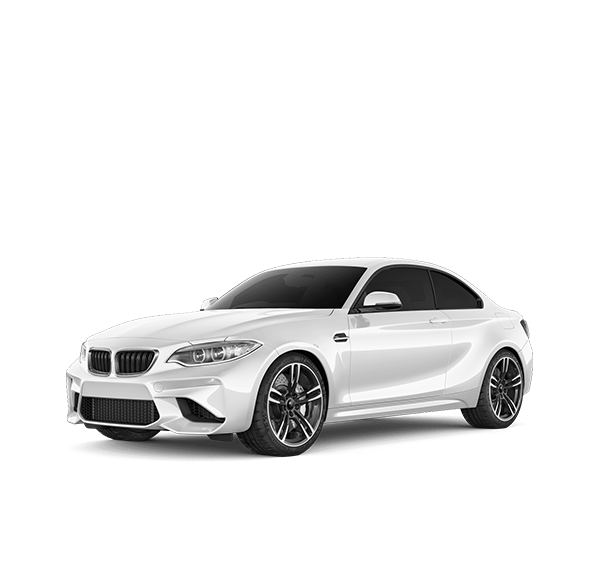
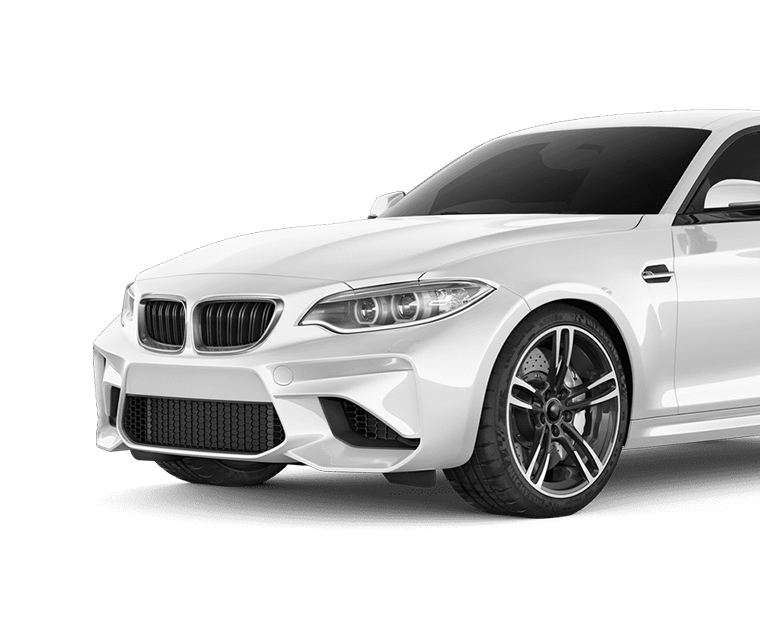
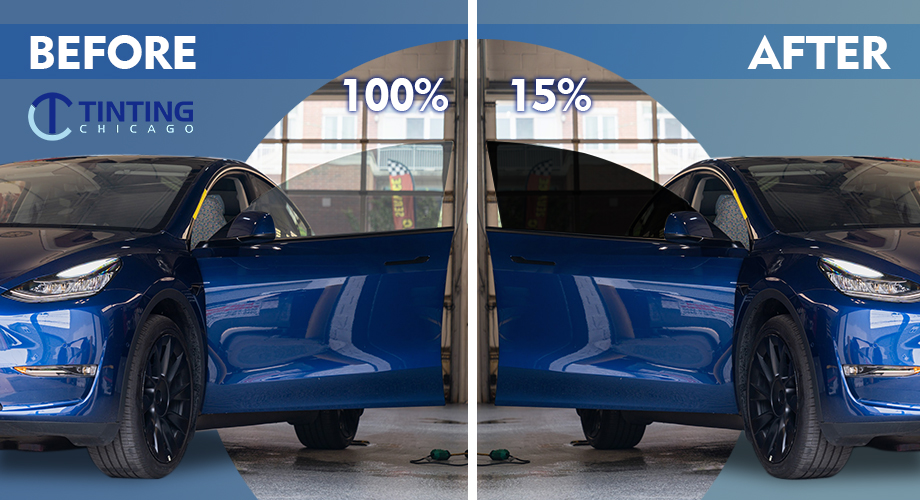
 Send a message
Send a message Send a message
Send a message